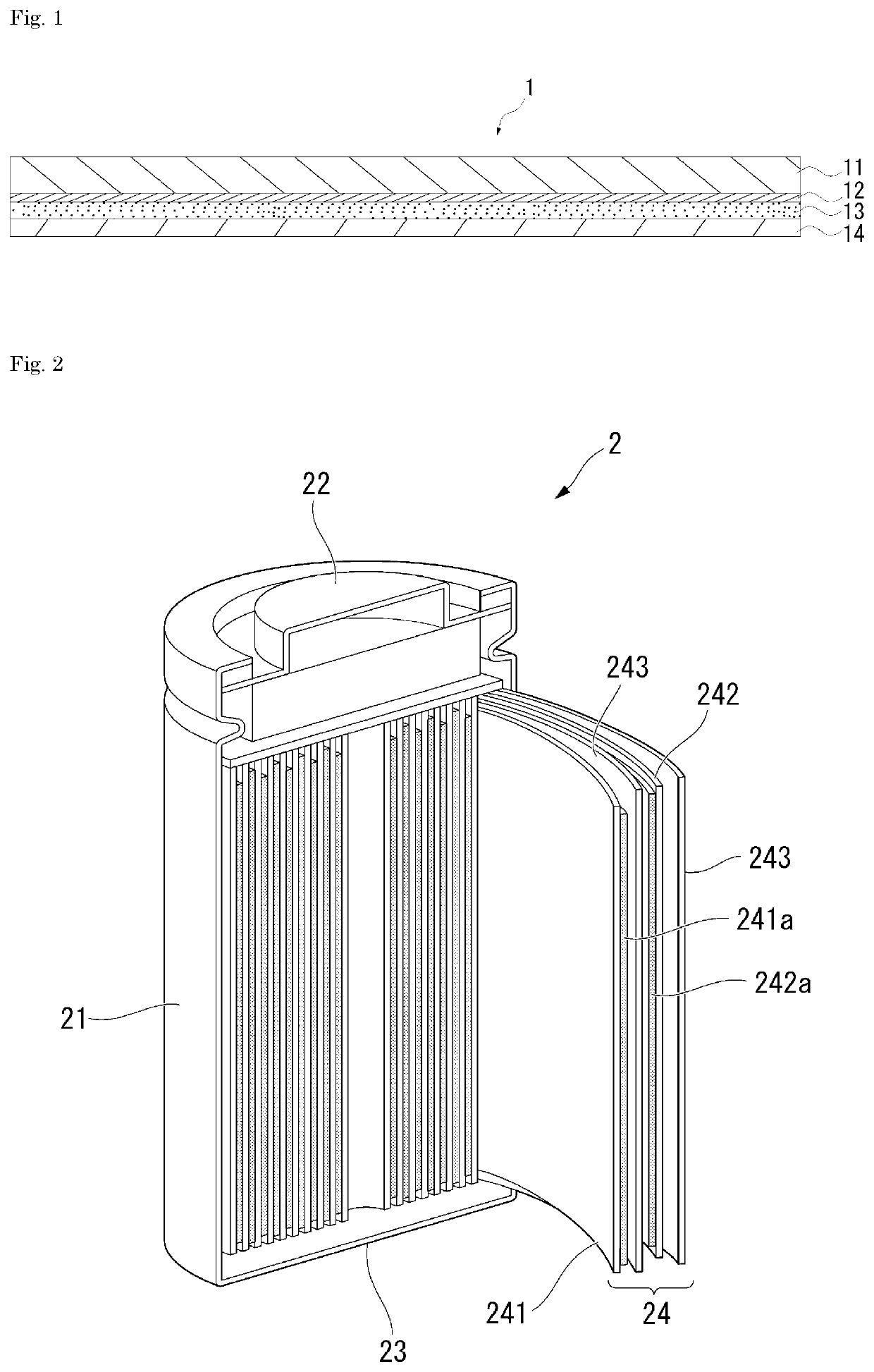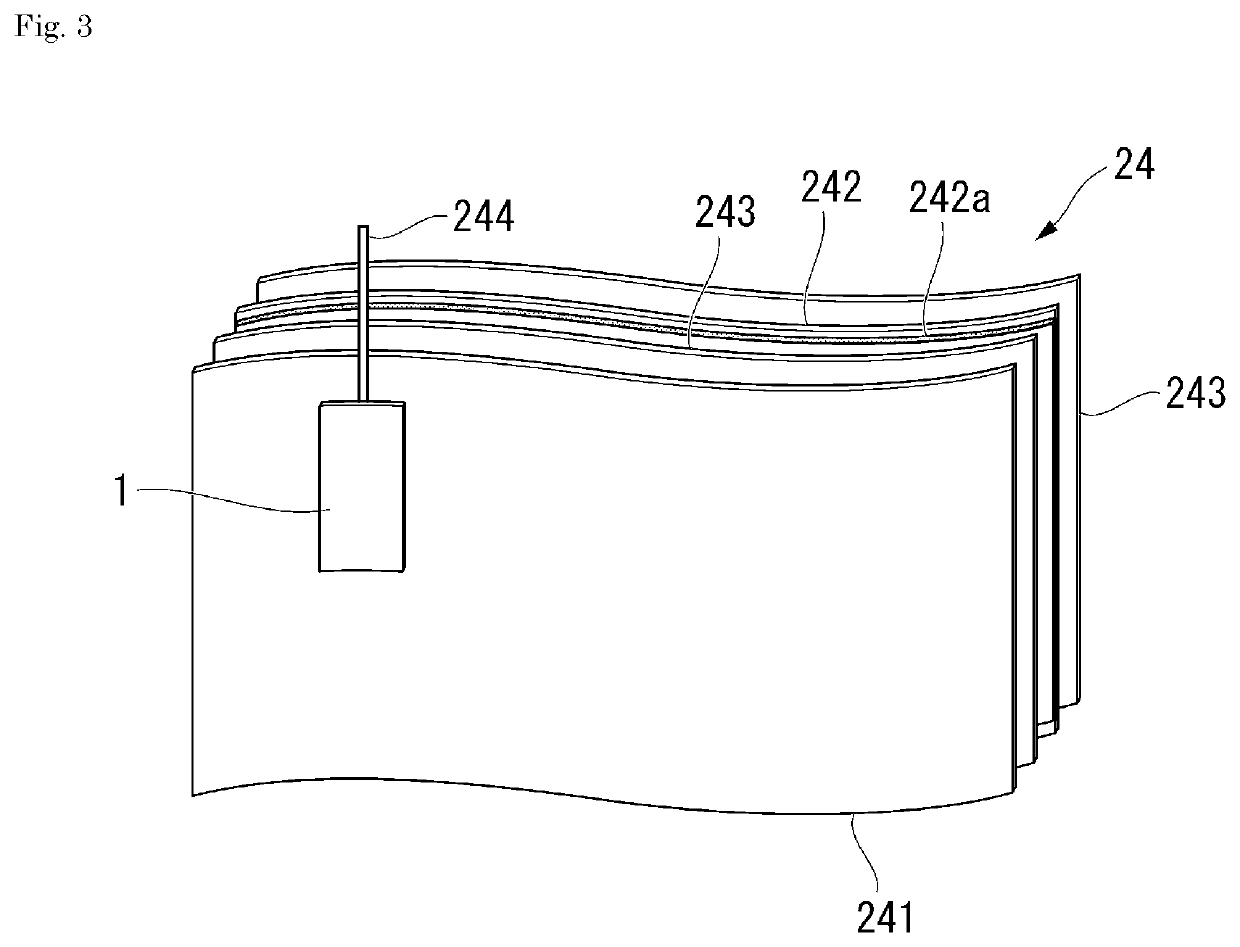Battery and method of manufacturing battery
- Summary
- Abstract
- Description
- Claims
- Application Information
AI Technical Summary
Benefits of technology
Problems solved by technology
Method used
Image
Examples
example 1
1. Formation of Hard Coat Layer on Base Material
[0128]A coating liquid for hard coat layer was prepared through mixing 40 mass parts of dipentaerythritol hexaacrylate (a material of which the glass-transition point is not observed after curing) as an active energy ray-curable component, 5 mass parts of hydroxycyclohexyl phenyl ketone as a photopolymerization initiator, and 60 mass parts (solid content equivalent, here and hereinafter) of an organosilica sol (available from Nissan Chemical Industries, Ltd., trade name “MEK-ST,” average particle diameter of 30 nm) as an inorganic filler and diluting them with methyl ethyl ketone.
[0129]One surface of a polyimide film (available from DU PONT-TORAY CO., LTD., trade name “Kapton 100H,” thickness of 25 μm, flame retardation level V-0 according to the UL94 standard) as a base material was coated with the above coating liquid using a knife coater and the coating liquid was then dried at 70° C. for 1 minute. Subsequently, the coating film was...
example 2
[0135]A (meth)acrylic ester polymer (Tg: −44° C.) was prepared using a solution polymerization method to copolymerize 75 mass parts of 2-ethylhexyl acrylate, 20 mass parts of isobornyl acrylate, and 5 mass parts of acrylic acid. The molecular weight of this polymer was measured using gel permeation chromatography (GPC), which will be described later. The weight-average molecular weight (Mw) was 700,000. A pressure sensitive adhesive sheet for batteries was produced in the same manner as in Example 1 except that the (meth)acrylic ester polymer obtained as the above was used.
example 3
[0136]A (meth)acrylic ester polymer (Tg: −38° C.) was prepared using a solution polymerization method to copolymerize 70 mass parts of 2-ethylhexyl acrylate, 25 mass parts of isobornyl acrylate, and 5 mass parts of acrylic acid. The molecular weight of this polymer was measured using gel permeation chromatography (GPC), which will be described later. The weight-average molecular weight (Mw) was 700,000. A pressure sensitive adhesive sheet for batteries was produced in the same manner as in Example 1 except that the (meth)acrylic ester polymer obtained as the above was used.
PUM
| Property | Measurement | Unit |
|---|---|---|
| Temperature | aaaaa | aaaaa |
| Length | aaaaa | aaaaa |
| Fraction | aaaaa | aaaaa |
Abstract
Description
Claims
Application Information
 Login to View More
Login to View More - R&D
- Intellectual Property
- Life Sciences
- Materials
- Tech Scout
- Unparalleled Data Quality
- Higher Quality Content
- 60% Fewer Hallucinations
Browse by: Latest US Patents, China's latest patents, Technical Efficacy Thesaurus, Application Domain, Technology Topic, Popular Technical Reports.
© 2025 PatSnap. All rights reserved.Legal|Privacy policy|Modern Slavery Act Transparency Statement|Sitemap|About US| Contact US: help@patsnap.com


